February 2017 – Artifact of the Month
Back to PAF Home
Back to Artifact of the Month Index
Archaeology Supports African American History As American History
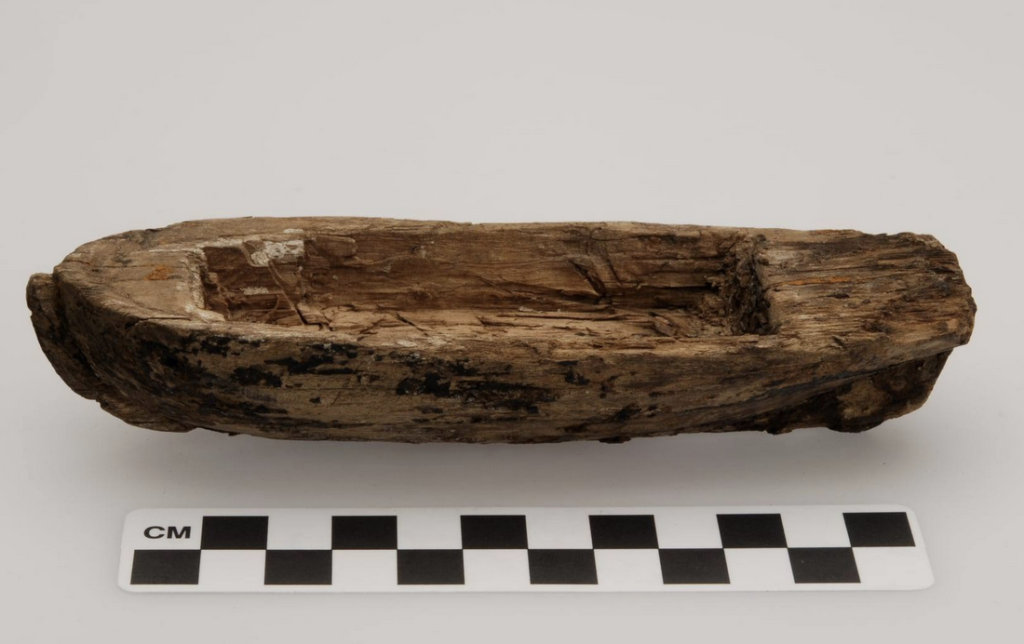
Carved wooden boat toy attributed to the woodcutter Israel Burgoe, an African American who lived in 18th century Philadelphia. CLICK ON THE IMAGE below to rotate the object. (3D rotating image courtesy of Bernard K. Means, Director of the Virtual Curation Laboratory of Virginia Commonwealth University.)
Carved Wooden Boat (VCU_3D_2193) by Virtual Curation Lab on Sketchfab
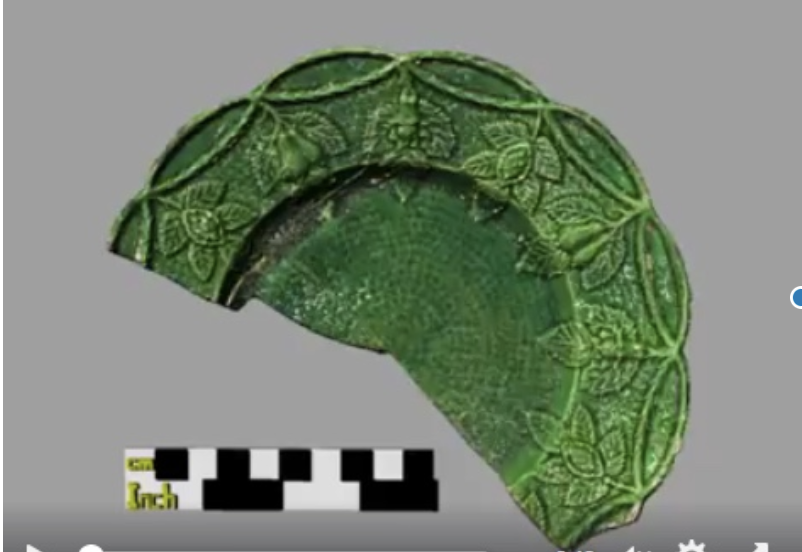
Plate fragment attributed to James Oronoco Dexter, a Free African American who lived in late 18th century Philadelphia. The plate was excavated at the site of the National Constitution Center in Independence National Historical Park. CLICK ON THE IMAGE below to rotate the object. (This 3D rotating scan comes via a Facebook post by Bernard K. Means, Director of the Virtual Curation Laboratory of Virginia Commonwealth University).
Green-Glazed Molded Plate (VCU_3D_2187) by Virtual Curation Lab on Sketchfab
In the US, the month of February is formally proclaimed as National African American History Month, also currently referred to as Black History Month. This observance’s original intent of a coordinated teaching of the history of American blacks remains strongly and broadly appreciated. However, the concept of teaching African American history during a limited period of time, in a segregated, or ‘separated from other history’ fashion, is also criticized in corners of both popular thought and academic scholarship. The same holds true for counterpart celebrations around the world.
Local Philadelphia preservation advocate (and attorney and writer) Michael Coard explains this point of view, writing that African American history “is much too important (to be) crammed into a limited time frame….Because it’s American history, and it’s world history” (See his 2012, article “Why It’s Time to Abolish Black History Month: February’s not the only time to learn American history and world history”).
This PAF ‘February 2017, Artifact of the Month’ feature acknowledges African American History Month by highlighting a newly re-mounted display of African American archaeological evidence that was excavated in Philadelphia. This displayed African American history evidence is being used to interpret the history of early America. The exhibit with its African American archaeology elements is permanent and is presented all-year-round. This primary exhibit, in a museum chartered to the understanding of our Nation’s constitutional foundations, transparently and deliberately teaches how and why African American history can not be separated out from the American story. Archaeology helps them to tell this American history.
~ ~ ~ ~ ~
Two African American artifacts excavated from the city of Philadelphia are now prominently featured in a newly re-mounted, permanent exhibit at the National Constitution Center (NCC). These artifacts – a green decorated plate and a carved wooden toy boat – are believed to be associated, respectively, with James Oronoco Dexter and Israel Burgoe. Dexter and Burgoe were members of the Free Black community living in late 18th-century Philadelphia. The new NCC display interprets their life as part of the museum’s ‘Philadelphia 1787’ exhibit which aims to tell the story of life in Philadelphia during the earliest years of the United States. The display includes a hands-on educational panel containing reproductions of the two items.
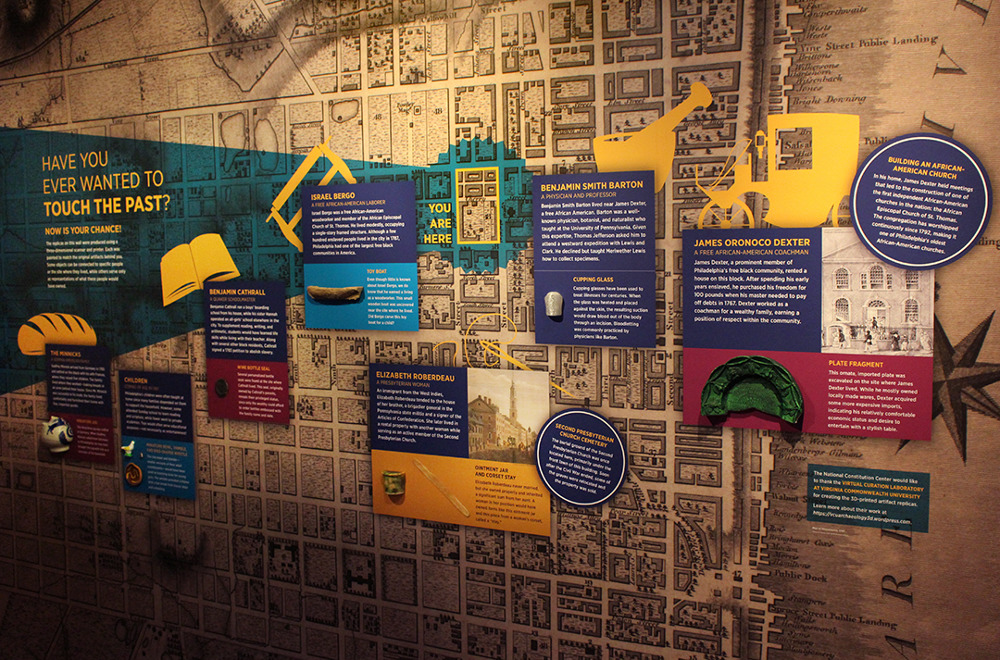
Founding Fathers
James Oronoco Dexter and Israel Burgoe were both founders of The Episcopal Church of St. Thomas, one the earliest Black Christian churches to be established. Dexter, who was once enslaved, bought his own freedom and that of his wife. He worked as a coachman in the later 18th-century. The green dish (see above, second rotating object) was discovered by archaeologists excavating the house lot where Dexter once lived. Israel Burgoe, who lived nearby, was a woodcutter. A small, wooden boat excavated from where Burgoe once lived is thought to be a toy that he carved (see top object, above). African American archaeology artifact discoveries such as these are helping to transform our understanding of early American life by working to reveal a more full and accurate record of lived experiences during the making of our country.
Fore-fronting African American Artifacts
The plate and boat artifacts were made available for display at the NCC through a partnership with the National Park Service. The NCC museum is built within the boundaries of Independence National Historical Park and archaeological excavations took place prior to the museum’s construction between 2000 and 2003. The Independence Archeology Lab at Independence Park is currently studying the more than 1 millions artifacts recovered during the NCC site excavations. These artifacts come from more than 100 house lots occupied by ‘We the People’ at the birth of the country (see maps below). As many as nine of these house lots dating to the late eighteenth-mid-nineteenth centuries are associated with free black households.
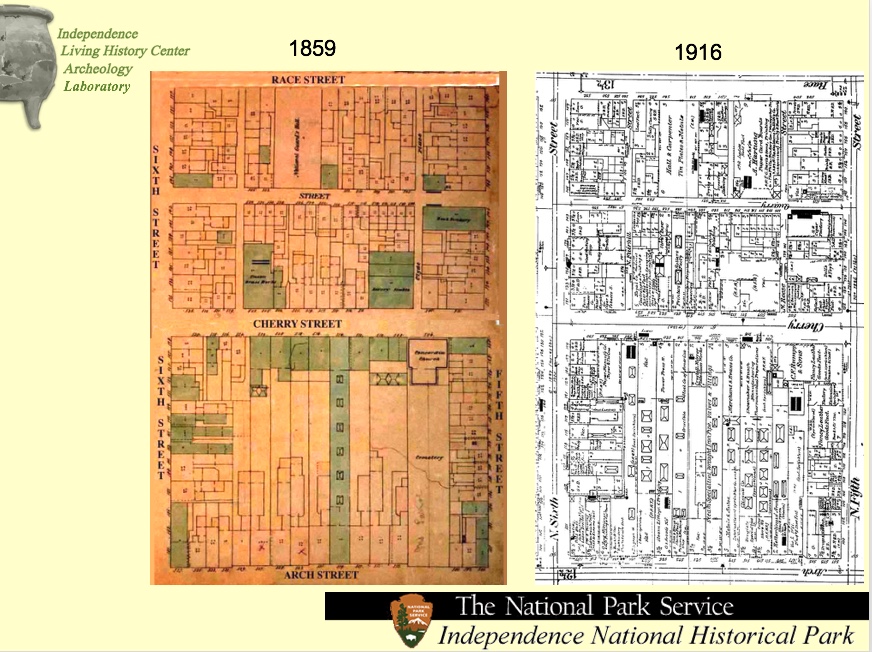
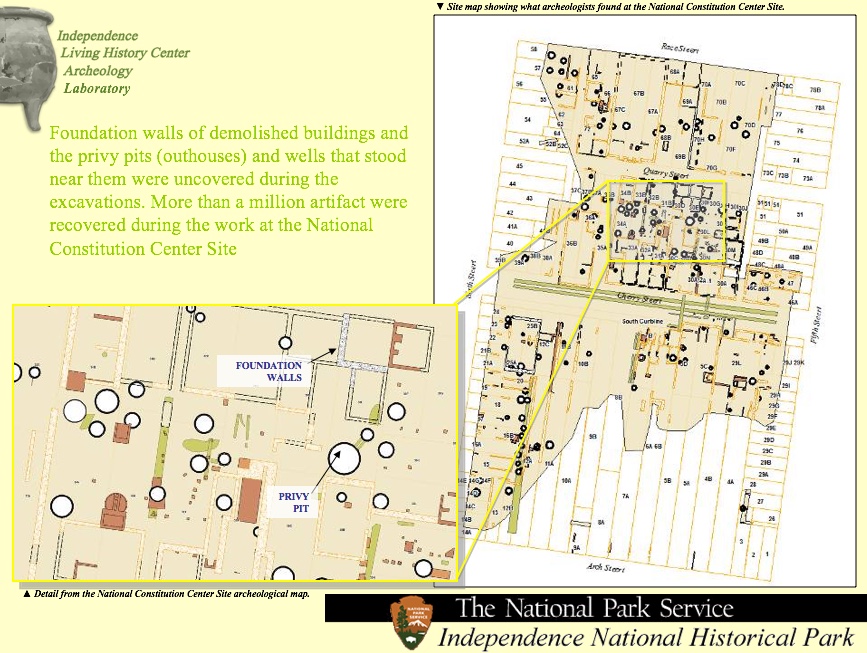
3D Printed Replicas Let Visitor’s ‘Touch the Past’
Seventy objects recovered from the vast NCC site archeological collection have been selected for the newly re-mounted, permanent NCC display. The items related to Dexter and Burgoe are among a handful of these 70 items that were also 3-dimensionally-scanned and then printed to make artifact replicas. These replicas are likewise incorporated into the new display where they provide visitors to the exhibit with an opportunity to ‘touch the past’.
The 3D scanning of the plate and wooden toy boat was undertaken by Bernard Means, Director of the Virtual Curation Laboratory at Virginia Commonwealth University (VCU). Students at VCU painted the artifact reproductions that will now will form a hands-on educational function within the NCC’s refurbished display. New digital, or computer-based, “vision” technologies such as 3D scanning and 3D printing are changing how the public engages with the archaeological evidence of their past. (Read more about the 3D artifact scanning and reproduction printing below.)
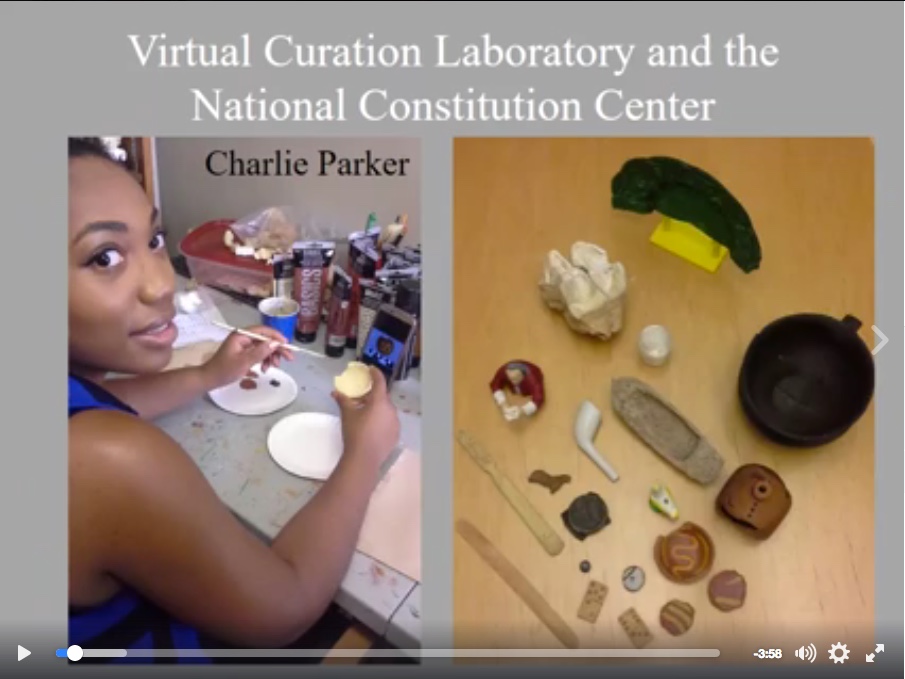
Archaeology supports African American History as American History.
Archaeology provides evidence regularly not found in the written documents depended upon for the writing of formal history. Archaeology produces evidence related to the women, children, aged, poor, enslaved and Free Black, and everyday white males not usually noted in important people, places, and events-type history – but who are the “We the People” that made our nation. The African American archaeological evidence related to James Oronoco Dexter and Israel Burgoe– stewarded by Independence National Historical Park, 3D scanned and printed by the VCU Virtual Curation Lab, and mounted by the National Constitution Center in a permanent display — is helping create a more amalgamated, richer, and fuller appreciation of American history that extends beyond the month of February to support our society’s future.
~ ~ ~ ~ ~ ~
Learn more about the James Dexter archaeological site . See also here and here (S. Salisbury, 2003, Philadelphia Inquirer, Pioneer’s Life is Dug up at Independence Hall. New Archaeological Approach Focuses on a Freed Slave”)
Some historical context for Israel Burgoe can be found here (11th paragraph from the top) (Independence NHP Historic Resource Study, Chapter 3.)
Learn more about African American History Month here and about its controversy here…(Michael Coard, “Don’t get me wrong, but abolish Black History Month”, Philadelphia Magazine, Feb. 2017, accessed January 31, 2017).
Learn more about the National Constitution Center and its mission here…
Learn more about the 3D scanning and printed reproductions at 3-D printed at VCU, Brian McNeill, University Public Affairs, Virginia Commonwealth University and here (B. K. Means Facebook past, “Philadelphia Story: “We the People” and 3D Scanning at the National Constitution Center Site”).
See also these topics in the Philadelphia Archaeological Forum’s news coverage archive here…
_______
Contributed by Patrice L. Jeppson, February 2, 2017. Thank you to Bernard K. Means for use of his images.
by admin